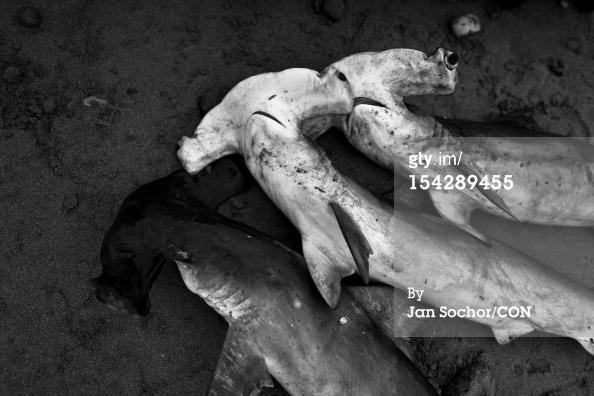Everyone loves a movie with a good villain. Unfortunately, when a type of wildlife is cast in that role, it can lead to real-world challenges. Since Jaws, and the many similar movies that have come since, sharks have developed a reputation for being mindless, killing machines that will stop at nothing to taste human flesh. It can be easy to forget the critical role that these unique creatures play in our ecosystem, and the fact that sharks are actually the ones who need to fear for their safety.
As predators at the top of the food chain, sharks serve a critically important purpose. Just like top predators on land, sharks regulate the populations of the species they feed on, helping to keep the ecosystem balanced and able to support a wide variety of life. A drastic decline in sharks could lead to a cascading effect throughout the ocean ecosystem, from coral reefs to the fish species on which many economies depend.
Though sharks have few natural predators, humans are having a major impact. The ugly truth is that up to 100 million sharks are killed each year, commonly caught for shark fin soup or as bycatch from lines that were set out for other fish. Though sharks have lived in Earth’s oceans for hundreds of millions of years, today many species are disappearing at an alarming rate. The IUCN has estimated that one-quarter of all shark, ray and chimaera species are threatened with extinction.
Thankfully, many organizations are working to combat the threats to sharks. And although progress is certainly slow, it does seem that the very real danger of losing certain species of sharks – and the ripple effect that could have – is no longer something the world is willing to ignore.
Here are a few of the hard-won achievements in just the past year.
The Battle Against Finning
In February, the National Marine Fisheries Services (NMFS) decided to take a step back once they realized they were treading in the wrong waters. They had originally issued a draft of regulations that would have put a stop to any state bans on trade in shark fins. But Defenders of Wildlife and many other conservation groups weighed in opposing these changes, submitting comment letters and developing legal arguments against the new rules. Eventually, NMFS backed off, and state laws banning trade in shark fins were allowed to continue. To date, Illinois, Washington, Hawaii, California, Oregon, New York, Maryland, Delaware and three Pacific Territories, as well as the city of Toronto, Canada, have all passed legislation to ban the practice.
New International Regulations – and the Knowledge to Put them into Practice
At the 2013 meeting of the Convention on International Trade in Endangered Species (CITES), after a great deal of work with other organizations and CITES delegates, we were thrilled that proposals for five shark species were adopted, setting regulations to control the demand of the shark-fin trade. These regulations go into effect in just a month – September, 2014. To help the international community enforce these rules, we needed to train officials from fishery agencies and CITES authorities on how to identify what shark species have been harvested based on what is brought ashore – sometimes just a fin. So in December, our experts were part of a major international workshop in South America to teach officials from around the world how to do just that, and to prepare a chain of custody. More than 70 representatives from 28 different countries attended, and we’re hopeful that, equipped with this knowledge, we'll soon see these new rules in place, making a real difference for sharks.
Gaining Protection Under the ESA
Though the international scene is vitally important for shark conservation, things may be changing here at home as well. Just last month, four groups (called “distinct population segments”) of scalloped hammerhead sharks were the first species of shark to be granted protections under the Endangered Species Act.
This ruling – protecting four groups of a single species – is admittedly small in scale. Experts believe that of the hundreds of species of sharks, more than 70 are in immediate need of protection. But to finally see a shark protected under our nation’s strongest wildlife conservation law is a definite step forward, and we will continue to work toward more.
It’s clear that to secure a future for sharks, a lot of work still needs to be done. We'll do our part by continuing to advocate – nationally and internationally – for stronger regulations against shark finning and more protection for these vital but vulnerable species. You can do your part by helping to dispel the myths around sharks, and by staying up to date on the latest opportunities to help advocate for sharks. Together, we can make sure these ancient animals are here to keep our oceans healthy for generations to come.
This article was originally written and published by John Yeingst, the communications coordinator for DefendersofWildlife.org. For the original article please click HERE.

Friends Read Free